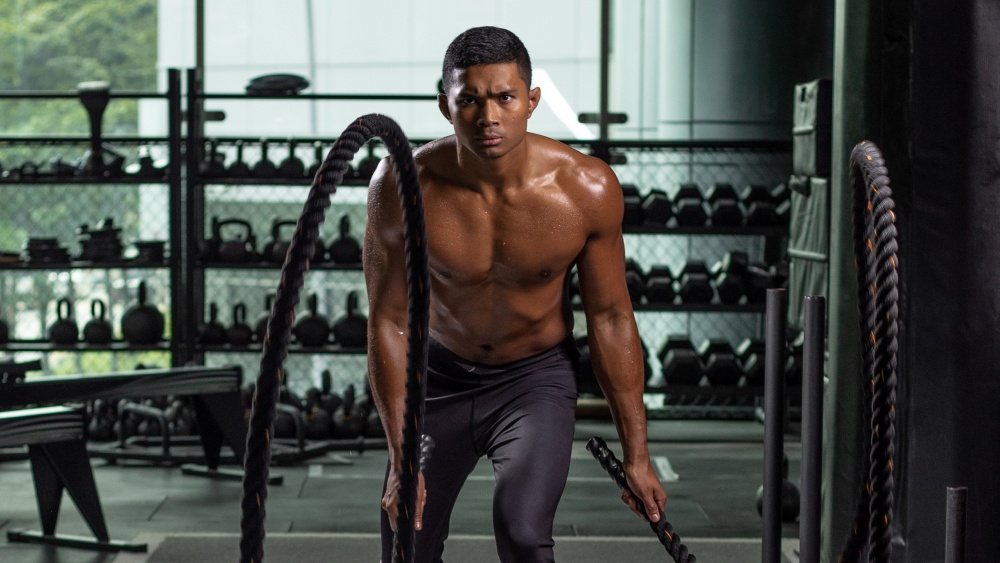Looking to take your mixed martial arts (MMA) skills to the next level? If you’re searching for that extra edge in the ring, plyometrics may be just what you need. Plyometrics, also known as jump training, is a highly effective form of exercise that focuses on explosive movements to enhance power, speed, and agility. In the world of MMA, where every strike counts, incorporating plyometric training into your routine can be a game-changer. Whether you’re a seasoned fighter or just starting out, the benefits of plyometrics are undeniable. From increasing knockout power to improving reaction time and footwork, plyometrics can help you dominate your opponents and achieve your full potential in the octagon. In this article, we will explore the numerous advantages of incorporating plyometrics into your MMA training regimen, and how it can revolutionize your striking abilities. Get ready to power up your strikes and leave your opponents in awe with the explosive benefits of plyometrics in MMA.
How plyometrics can improve striking power
One of the key benefits of plyometrics in MMA is its ability to improve striking power. Plyometric exercises train your muscles to generate maximum force in a short amount of time, which translates to more powerful strikes. By focusing on explosive movements like jumps, hops, and bounds, plyometrics can increase the rate of force development in your muscles, allowing you to deliver devastating strikes with ease.
When you perform plyometric exercises, your muscles stretch and store energy during the eccentric phase, and then rapidly contract during the concentric phase, resulting in a powerful and explosive movement. This stretch-shortening cycle helps activate the fast-twitch muscle fibers responsible for generating explosive force, giving you the ability to deliver knockout blows in the cage.
Plyometric exercises for striking power
To improve your striking power, incorporating specific plyometric exercises into your training routine is key. Here are a few examples of plyometric exercises that can help maximize your punching and kicking power:
Box Jumps
Stand in front of a sturdy box or platform and jump onto it, landing softly with slightly bent knees. Step down and repeat for multiple reps. Box jumps help develop explosive leg power, which is crucial for generating power in your strikes.
Medicine Ball Slams
Grab a medicine ball and lift it above your head. Forcefully slam the ball onto the ground as hard as you can, catching it on the rebound. The explosive movement involved in medicine ball slams targets your core and upper body, helping to generate power in your punches and clinch work.
Depth Jumps
Stand on a box or platform and step off, landing softly on the ground. Immediately upon landing, explode back up into a jump. Depth jumps improve lower body power and reactive strength, which are essential for explosive kicks and takedowns.
Remember, when performing plyometric exercises, it’s important to maintain proper form and technique. Start with lower intensity exercises and gradually increase the difficulty as your strength and explosiveness improve.
Safety precautions when incorporating plyometrics in MMA training
While plyometrics can be highly beneficial for MMA fighters, it’s crucial to take safety precautions when incorporating them into your training regimen. Here are a few tips to keep in mind:
1.Warm-up
Always warm up thoroughly before starting plyometric exercises. This helps prepare your muscles for the explosive movements and reduces the risk of injury.
2. Proper footwear
Wear appropriate footwear with good cushioning and support to minimize the impact on your joints.
3. Surface selection
Choose a flat and non-slip surface to perform plyometric exercises to prevent slips and falls.
4. Progression
Start with lower intensity exercises and gradually progress to more advanced movements. It’s important to give your body time to adapt and build strength before attempting high-impact exercises.
By following these safety precautions, you can minimize the risk of injury and reap the full benefits of plyometric training in MMA.
Plyometrics for other aspects of MMA
While plyometrics are well-known for improving striking power, their benefits extend far beyond just punches and kicks. Plyometric exercises can also enhance other aspects of MMA, such as speed, agility, and reaction time.
Speed is crucial in MMA, as it allows you to quickly close the distance between you and your opponent, evade strikes, and launch counterattacks. Plyometrics can help improve your sprinting speed, enabling you to move faster around the cage and react quickly to your opponent’s movements.
Agility is another important attribute in MMA, as it allows you to change direction rapidly, dodge strikes, and execute complex techniques. Plyometric exercises that involve lateral jumps, side-to-side bounds, and quick footwork drills can enhance your agility and footwork, making you a more elusive and unpredictable fighter.
Additionally, plyometrics can improve your reaction time, which is vital in MMA. Reacting quickly to your opponent’s strikes and takedowns can mean the difference between victory and defeat. Plyometric exercises that focus on explosive movements and quick reflexes can sharpen your reaction time, enabling you to counter and defend effectively in the heat of battle.
Plyometrics for conditioning in MMA
In addition to improving specific skills, plyometrics can also be an effective conditioning tool in MMA. The high-intensity nature of plyometric exercises elevates your heart rate and burns calories, helping you to improve your cardiovascular fitness and endurance.
By incorporating plyometric exercises into your conditioning workouts, you can replicate the demands of an MMA fight, which often involve explosive bursts of energy and quick recovery times. This type of training can enhance your overall stamina, allowing you to maintain a high level of performance throughout the duration of a fight.
Plyometrics for injury prevention in MMA
Injuries are an unfortunate reality in MMA, but plyometric training can help reduce the risk of common injuries. By improving your muscle strength, power, and stability through plyometric exercises, you can enhance the stability of your joints and reduce the likelihood of sprains, strains, and other injuries.
Additionally, plyometrics can help improve the strength and stability of your core muscles, which play a crucial role in maintaining proper posture and balance during fights. A strong core can help prevent injuries to your back and hips, which are common in combat sports.
How to incorporate plyometrics into your MMA training routine
To incorporate plyometrics into your MMA training routine, it’s important to have a structured plan that includes a variety of exercises targeting different muscle groups and skills. Here’s a simple guideline to help you get started:
1. Assess your current fitness level: Before starting any new training program, assess your current fitness level to determine your strengths and weaknesses. This will help you tailor your plyometric training to address specific areas that need improvement.
2. Set specific goals: Identify the specific goals you want to achieve through plyometric training. Whether it’s increasing punching power, improving agility, or enhancing conditioning, setting clear goals will help you stay focused and motivated.
3. Design a well-rounded program: Create a training program that includes a mix of plyometric exercises targeting different muscle groups and skills. Include exercises for striking power, speed, agility, reaction time, conditioning, and injury prevention.
4. Progress gradually: Start with lower intensity exercises and gradually increase the difficulty as your fitness level improves. Progression is key to avoid overtraining and minimize the risk of injury.
5. Schedule regular rest days: Plyometric training is intense and places a significant amount of stress on your muscles and joints. Schedule regular rest days to allow your body to recover and adapt to the training stimulus.
Remember, consistency is key when it comes to plyometric training. Incorporate these exercises into your routine at least 2-3 times a week for optimal results.
Examples of successful MMA fighters who use plyometrics
Many successful MMA fighters have incorporated plyometrics into their training routines and have reaped the benefits in the octagon. Here are a few examples:
1. Jon Jones: Known for his explosive striking and unorthodox techniques, Jon Jones incorporates plyometrics into his training to enhance his knockout power and agility.
2. Conor McGregor: McGregor’s lightning-fast strikes and precise footwork are a testament to his dedication to plyometric training. He utilizes plyometrics to improve his speed, power, and reaction time.
3. Ronda Rousey: Rousey’s dominant grappling and takedown ability are complemented by her explosive power, which is developed through plyometric training.
By following in the footsteps of these successful fighters and adding plyometrics to your training regimen, you can elevate your MMA skills and achieve peak performance in the cage.
Conclusion
Plyometrics can be a game-changer for MMA fighters looking to enhance their striking power, speed, agility, and overall performance in the octagon. By incorporating plyometric exercises into your training routine, you can develop explosive power, improve reaction time and footwork, and reduce the risk of injuries.
Remember to start with lower intensity exercises and gradually progress as your strength and explosiveness improve. Prioritize safety by warming up properly, wearing appropriate footwear, and choosing a suitable surface for plyometric training.
Whether you’re a seasoned fighter or just starting out, plyometrics can revolutionize your striking abilities and help you dominate your opponents. Power up your strikes and leave your opponents in awe with the explosive benefits of plyometrics in MMA.


